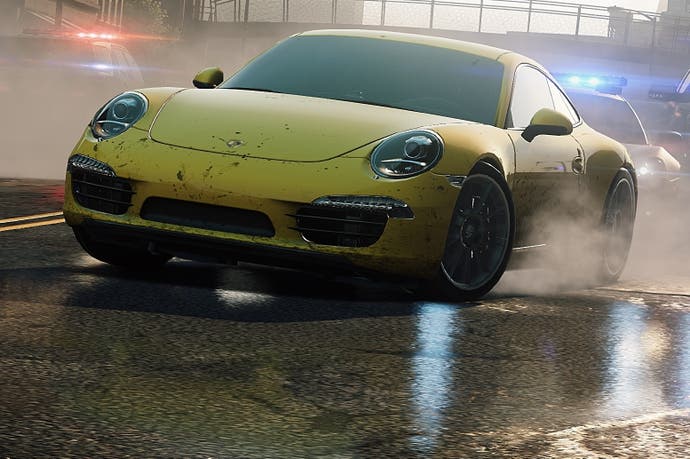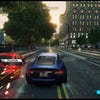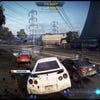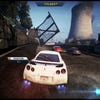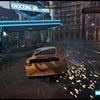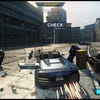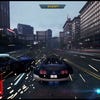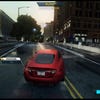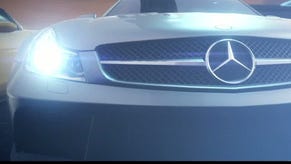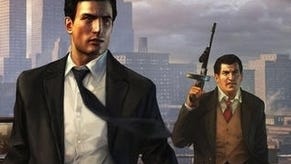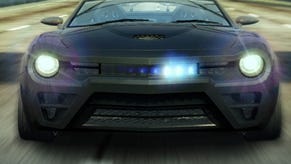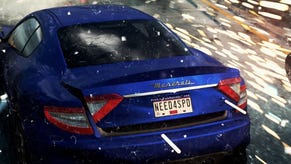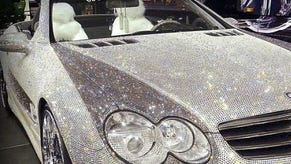Wii U's Most Wanted: Criterion returns to Nintendo hardware with enhanced Need for Speed
Digital Foundry has the full behind-the-scenes story.
Whatever you may be expecting from the Wii U version of Need for Speed: Most Wanted, we're willing to bet that Criterion is going to surprise you. The company hasn't shipped a game on Nintendo hardware since the enhanced conversion of Burnout 2: Point of Impact over a decade ago, and the studio has a point to prove.
On a technical level, one of the best cross-platform development teams in the business wants to demonstrate that the controversial Nintendo hardware can match and even exceed the Xbox 360 and PlayStation 3 image quality while still hitting performance targets. However, more importantly, the developer has also set out to understand the core ethos behind the console, reshaping Most Wanted to better suit the areas in which the Wii U truly excels.
Eurogamer's Martin Robinson calls this "the third space": not your HDTV or your GamePad display, but the environment around them - the living room, the players and how they interact with the game experience. This is the Nintendo difference, something that Criterion realised after taking delivery of the new console at launch.
"Before the hardware was released, our approach was very much about delivering an enhanced version of Most Wanted that focused on single-player in the front room and multiplayer through the online experience," remembers Criterion producer Rob O'Farrell.
"Once the Wii U was out and we spent time playing the software in the office and with our families at home, it really changed our thought process and approach to the platform. With games like Nintendo Land and New Super Mario Bros. U, Nintendo delivered a new way of playing together in the same room. A great part of that was having one person in full control of the game, with another watching and occasionally helping them progress. With this in mind, the Co-Driver mode became our focus, so we could bring social play into the living room on Most Wanted, but with a Nintendo feel. It couldn't be hidden away, it had be easy to understand what to do and have that feel of Nintendo quality on the platform."
Co-Driver mode is the official name, but in the Criterion office it's known more colloquially as Father and Son mode. The main driver plays Most Wanted in exactly the same way as he would on any other console, but the experience is remixed on the fly by a second player with the GamePad, who is granted god-like debug mode-style powers that control key aspects of the game.
The idea is that the co-driver acts like a benevolent overseer (the "father"), helping the less experienced main player (the "son") through the game. He can override the controls to help out in tricky spots, he can switch between day and night in order to help (or hinder) visibility, and he has access to a more expansive version of the game map, highlighting cars, billboards and other elements of the open world so he can better guide the driver towards those key areas of the map. Co-Driver mode also offers control of elements of the open world likely to alarm core players - traffic can be enabled and disabled at will, nearby police cars spin out with just a single tap, while every car in the game, barring the Most Wanted line-up, is instantly accessible via a simple menu system.
"We wanted to make the game accessible from the moment you boot up software. If you only had 30 minutes to play then we wanted to make sure that 30 minutes was a great experience and allow the players to pick any car, any race."
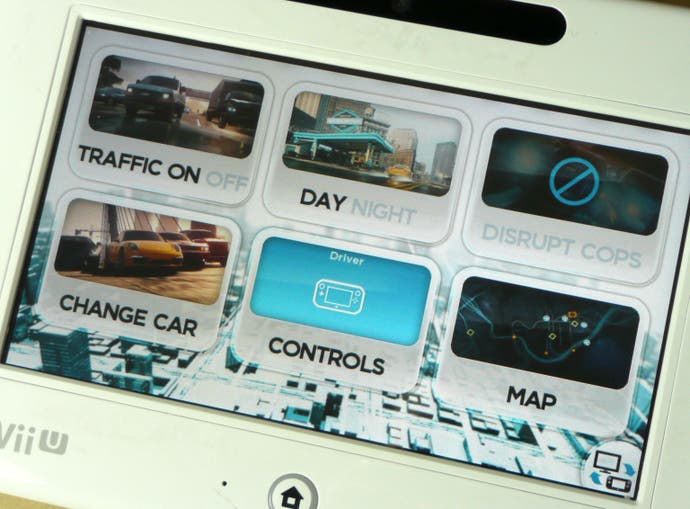
"We wanted to make the game accessible from the moment you boot up software. If you only had 30 minutes to play then we wanted to make sure that 30 minutes was a great experience and allow the players to pick any car, any race," explains O'Farrell.
"With everything open, it enables the player to swap from a Porsche to Lamborghini on the fly, respray the car, find a race and have their 'partner' direct them to all the collectables without the restriction of, 'Oh, that isn't open yet.' It creates a negative feeling within the experience and we wanted to get rid of that and give you a mode that is all about driving around the city, having fun without any constraints."
The social sandbox racer
What sounds like a debug mode gone mad transforms the open world game into something quite different - a sandbox racer, if you like, where players dip in and out for the occasional short session: choosing the car they want, disabling the traffic and going for those top-speed burnouts that were so enjoyable in Hot Pursuit but simply couldn't transfer across into the more claustrophobic, traffic-dense world of Fairview. It's the game mode for those who weren't too bothered with GTA 4's story but instead spent hours experimenting with the mobile telephone cheat codes.
Co-Driver mode works for solo gamers too; there's nothing to stop the main player dipping in and out of the functionality on offer, or simply ignoring it altogether, using only the more traditional Wii U mods such as the expanded mini-map or the GamePad HDTV mirroring mode. Regular players worried about losing Speedwall status to 'cheating' players can rest easy: competitive elements affected by the Co-Driver tweaks are clearly highlighted, and specific Co-Driver options regularly grey-out when their use is not appropriate.
While Most Wanted U may lack the split-screen style of gameplay perhaps best suited to the platform, Co-Driver is an interesting attempt at addressing "the third space". It provides a way for more experienced gamers to guide the uninitiated into the world of AAA gaming where the genre conventions are second nature to us but perhaps somewhat more bewildering to the non-core. Those concerned that Criterion's efforts in expanding the reach of their game come at the expense of a technically competent conversion needn't worry. The firm has established a reputation for extremely close cross-platform development and, from what we've seen, Need for Speed: Most Wanted U looks very impressive, and even has the potential to exceed the image quality of the Xbox 360 and PlayStation 3 versions. But the journey towards this level of accomplishment on the Nintendo hardware has been far from simple.
The Criterion team found itself looking at what seemed to be some decent hardware, but without the means to fully access its potential. Idries Hamadi, technical director, is at pains to point out that this isn't a port in the traditional sense ("it's not like we finished Most Wanted and then we started this on Wii U, we had stuff running this time last year") but explains the general process involved in bringing a game on one platform to another.
"Getting the graphics and GPU to run at an acceptable frame-rate was a real struggle. The hardware was always there, it was always capable. Nintendo gave us a lot of support... that wasn't there at day one... the tools, everything."
"The starting point is always, let's just get some running software and see what it's like - get something that's running and playable. When you start you're at some sort of frame-rate or other... you take out absolutely everything you can that's optional, get something playable, tune what you've got and get that up to an acceptable frame-rate, and then put more and more back in," he reveals.
"The difference with Wii U was that when we first started out, getting the graphics and GPU to run at an acceptable frame-rate was a real struggle. The hardware was always there, it was always capable. Nintendo gave us a lot of support - support which helps people who are doing cross-platform development actually get the GPU running to the kind of rate we've got it at now. We benefited by not quite being there for launch - we got a lot of that support that wasn't there at day one... the tools, everything."
High-end PC textures come to Wii U
The result is unarguably the one of the most impressive, technologically challenging cross-platform conversions the Wii U has in its roster. Owing to the 1GB of RAM available to developers - compared to the 512MB on Xbox 360 and PlayStation 3 - the Wii U version features the enhanced textures currently found only on the PC version. It sounds like an ambitious addition, but it proved to be no issue for the team.
"There's a switch in our build pipeline that says 'use PC textures' and we flipped that and that was all," Hamadi laughs. "I can take no credit for that, it was literally ten minutes' work... we are using PS3/360 geometry. It's just the textures we upgraded."
Questions about the theoretical bottlenecks of the Wii U hardware - the RAM set-up, the bandwidth - are left unanswered. Partly because we're straying into NDA territory and partly because we get the distinct impression that, for Criterion at least, it wasn't an issue.
"Tools and software were the biggest challenges by a long way... the fallout of that has always been the biggest challenge here," Idries reaffirms. "[Wii U] is a good piece of hardware, it punches above its weight. For the power consumption it delivers in terms of raw wattage it's pretty incredible. Getting to that though, actually being able to use the tools from Nintendo to leverage that, was easily the hardest part."
But hang on a second. This does somewhat dispute the established narrative suggested by more than one developer of a console using out-dated CPU technology derived from the Wii, which in turn was an overclocked, tweaked version of the GameCube. Ten minutes into our chat and Idries hasn't once mentioned the infamous lack of Wii U CPU horsepower. Wasn't this an issue for developing Most Wanted on the new Nintendo console? He pauses for a short moment while framing his answer.
"It's really important that people knew we'd done this in-house with our staff and our techniques and our approach... I just hope people can see that we're having a go, doing what we want to do with this."
"When they first looked at the specs on paper a lot of developers said, 'Well, you know this is a bit lightweight' and they walked away. I think a lot of people have been premature about it in a lot of ways because while it is a lower clock-speed, it punches above its weight in a lot of other areas," he explains.
"So, I think you've got one group of people who walked away, you've got some other people who just dived in and tried and thought, 'Ah... it's not kind of there,' but not many people have done what we've done, which is to sit down and look at where it's weaker and why, but also see where it's stronger and leverage that. It's a different kind of chip and it's not fair to look at its clock-speed and other consoles' clock-speed and compare them as numbers that are relevant. It's not a relevant comparison to make when you have processors that are so divergent. It's apples and oranges."
A cross-platform game with a genuine edge on Wii U?
We've seen Wii U ports with minor enhancements, conversions that are mostly identical with minor performance issues and others with major frame-rate fails. Most Wanted U was in the final stages of development at Criterion when we saw it and, historically, their builds improve dramatically day-by-day on the run-up to ship, so for now we'll save the forensic eyeballing until the game goes final, but it's difficult not to be impressed with the quality of the results thus far.
"The Wii U has had a bit of a bad rap - people have said it's not as powerful as 360, this, that and the other... Hopefully we'll go some way to proving that wrong."
Criterion says that Most Wanted U harks back to its roots, to the golden era of Burnout 2: Point of Impact where each console got a bespoke version of one of the best racing games ever made.
"People thought we weren't doing it on Wii U because we've not worked on a Nintendo console since 2002," says Criterion's creative director and vice president Alex Ward.
"It's really important that people knew we'd done this in-house with our staff and our techniques and our approach... In an ideal world we'd make different games on all the different hardware but that's not always the best business sense. I just hope people can see that we're having a go, doing what we want to do with this."
Idries Hamadi chimes in with his final thoughts.
"The Wii U has had a bit of a bad rap - people have said it's not as powerful as 360, this, that and the other. That, by and large, has been based on apples to oranges comparisons that don't really hold water. Hopefully we'll go some way to proving that wrong," he says.
"Nintendo don't speak about that, it's not their core focus at all but they did their 'Iwata Asks' about the hardware and it talks consistently about how they got to keep it quiet with low power consumption, and they totally did that... but what they haven't really championed is how they delivered something that could do this as well [he points to the 50-inch Panasonic playing host to Most Wanted U]... It's possible. It's work. You have to think about it and put time and craft and effort and whatever else into it but you have to do that for everything that's worth doing in this business... I think people should either go all-in or not bother."
